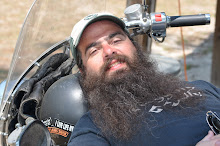- the difference between point source pollution and non-point source pollution.
- Types of nonpoint-source pollution include oil and gasoline from cars, trucks, and watercraft, as well as the use of pesticides, herbicides and fertilizers.
- Types of point-source ocean pollution include trash dumping, sludge dumping, and oil spills.
- Efforts to save ocean resources include international treaties and volunteer cleanups. This includes the creation of Environmental Protection Agency (EPA), the Clean Water Act, and the U.S Marine Protection, Research, and Sanctuaries Act.
Thursday--Review of Chapter 3 (pages 32-43 in their Notebook) I will also be checking to see that students have processed information on pages 38 and 40 in their notebooks.
Friday--Glogsters must be completed so other students can review them and learn about other marine ecosystems.
Monday--Test over Chapter 3
